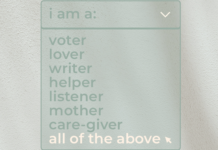The benefits of relationships and canoodling abound. Yet contrary to what some men may claim in locker rooms, dorm rooms, and after one too many hours at happy hour, more sexual partners does not equal more happiness.
Scientists examined data from 16,000 Americans and found that:
The happiness‐maximizing number of sexual partners in the previous year is calculated to be 1.
That’s right, according to research, one sexual partner over the span of 365 days is the ideal number to achieve happiness (and that’s not a euphemism). One is better than two or 200.
These findings run contrary to the Coolidge Effect, an anecdotal story about President and Mrs. Coolidge visiting a poultry farm in the 1920s:
The President and Mrs. Coolidge were being shown separately around an experimental government farm. When Mrs. Coolidge came to the chicken yard she noticed that a rooster was mating very frequently. She asked the attendant how often that happened and was told, “Dozens of times each day.” Mrs. Coolidge said, “Tell that to the President when he comes by.” Upon being told, President asked, “Same hen every time?” The reply was, “Oh, no, Mr. President, a different hen every time.” President: “Tell that to Mrs. Coolidge.”
Thus was born the Coolidge Effect: the tendency of the males of most mammal species to seek variety in sexual partners and exhibit greater sexual desire for new partners, even after ‘exhausting’ themselves with previous partners. Study after study shows that rats and hamsters most definitely exhibit the Coolidge Effect.
So what about humans? There are two sides to the equation, one spurred by evolution and survival of the fittest and one spurred by the mental health of an evolved species in modern times. While we may be biologically wired to follow the Coolidge Effect to guard against putting all our eggs in one basket, the study clearly shows one sexual partner a year optimizes happiness and a meaningful life.
Bottom line: monogamy rules.
I wish you all the best,
Dr. Samantha Boardman






